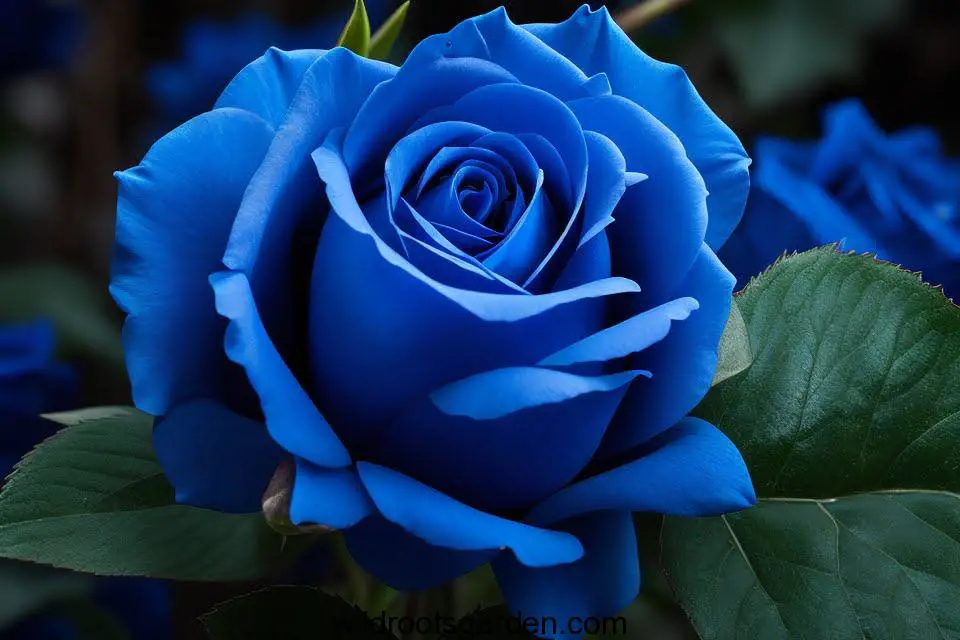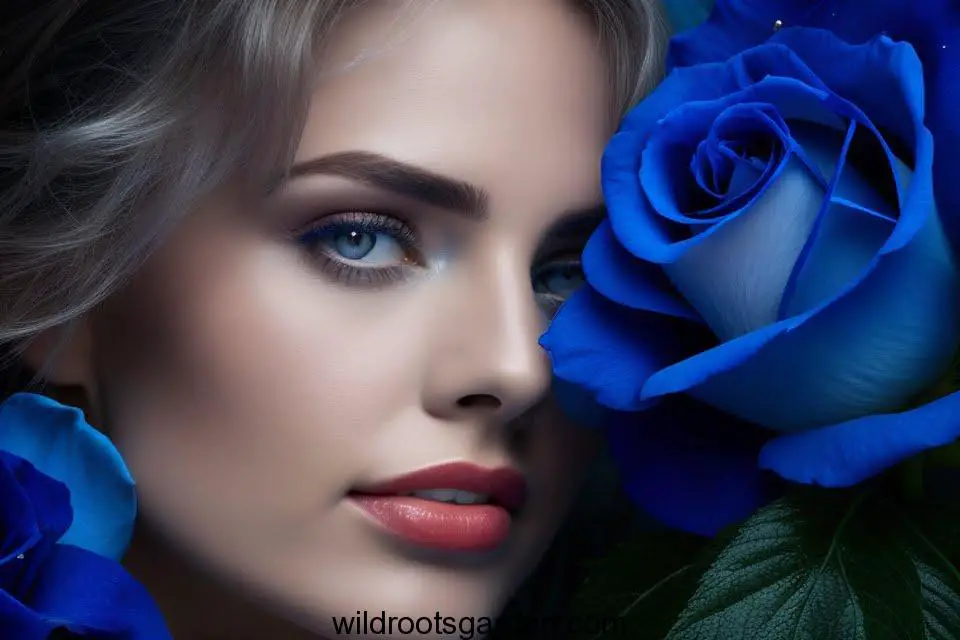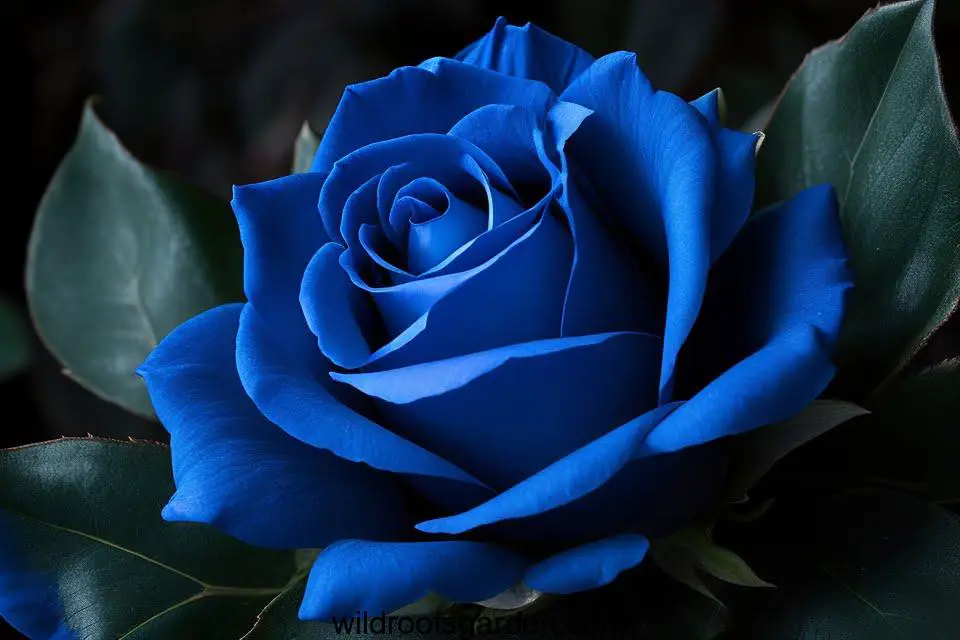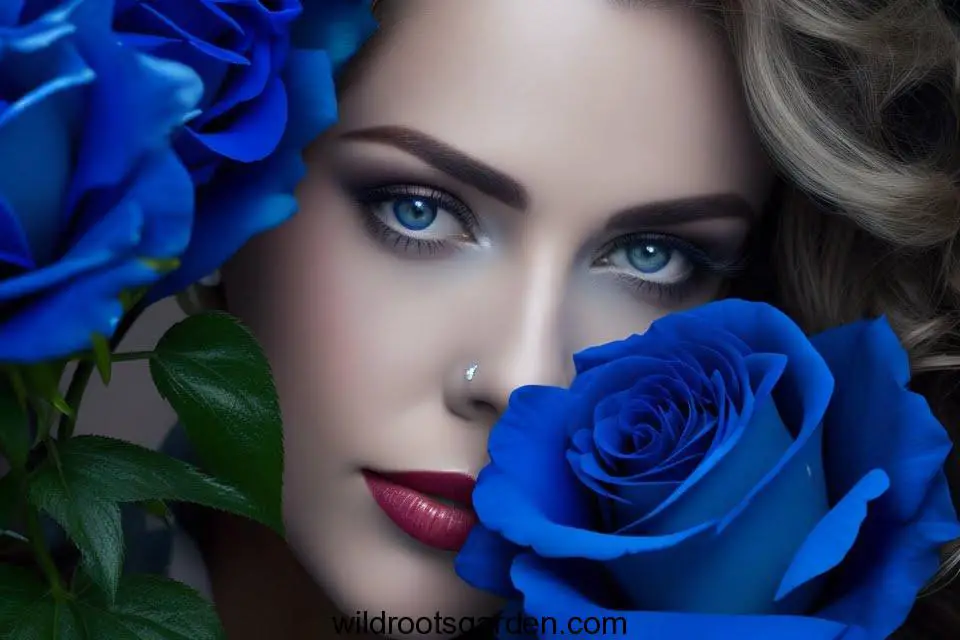Are Blue Roses Real or Dyed? For years, those who love flowers have been curious and enthralled by the attraction of the blue rose. But the issue still stands: are these mysterious blossoms genuine, or are they merely the product of inventive dyeing methods?
The truth is that blue roses don’t really exist in the wild. Due to the lack of the particular pigment that gives them their distinctive blue color, previous attempts to breed them using conventional ways ran into difficulties. Yet, developments in genetic engineering and biotechnology have made it possible to produce genetically altered blue roses.
While some might claim that these roses don’t have the same authenticity as flowers that grow organically, others believe that their beauty and uniqueness are proof of the intellect and creativity of humans.
In a mixture, then, is the solution.

Roses have long been revered for their beauty and symbolism, captivating our senses with their vibrant colors. While red, pink, and yellow roses are commonly found, the elusive blue rose has captured the imagination of many. The allure of a true blue rose, like something out of a fairytale, has sparked curiosity and debate. In this article, we will explore the question: Are blue roses real or dyed?
The Fascination with Blue Roses
Blue has always been associated with mystery and enchantment, making blue roses a subject of fascination. Throughout history, countless poets, artists, and romantics have sought the elusive blue rose, considering it a symbol of the unattainable. However, finding a naturally occurring blue rose has proven to be a challenge.
Natural Blue Roses: Fact or Fiction?
In nature, true blue roses do not exist. The genetic makeup of most rose species lacks the necessary components to produce blue pigments. Traditional rose colors are the result of pigments called anthocyanins, which produce shades of red, pink, and purple. The absence of specific enzymes in roses prevents the synthesis of blue pigments, leading to the absence of naturally occurring blue roses.

Genetic Modification: Creating Blue Roses
To overcome the genetic limitations of roses, scientists have turned to genetic modification. Through genetic engineering techniques, researchers have successfully introduced genes from other plants into roses to enable the production of blue pigments. By incorporating genes from flowers such as pansies and irises, scientists have been able to create genetically modified blue roses.
The Role of Pigments in Blue Roses
The blue color in genetically modified roses is achieved through the expression of specific pigments. Delphinidin, a pigment found in certain flowers, is responsible for the blue hues observed in blue roses. Through genetic engineering, researchers have managed to activate and enhance the production of delphinidin in roses, resulting in the creation of blue varieties.
The Quest for Natural Blue Roses
Despite the success of creating blue roses through genetic modification, the quest for natural blue roses continues. Scientists are exploring various breeding techniques and genetic approaches to develop roses that can produce blue pigments naturally. While progress has been made, the challenges posed by the complex genetic makeup of roses make the search for natural blue roses an ongoing endeavor.
The Symbolism of Blue Roses
Blue roses have gained symbolic significance in different cultures and contexts. They often represent the unattainable or the mysterious, evoking a sense of longing or desire. Blue roses can also symbolize uniqueness and individuality, standing out from the traditional colors of roses and conveying a message of rarity and distinction.

Dyed Blue Roses: A Popular Alternative
To meet the demand for blue roses, florists and growers have turned to dyeing techniques as a popular alternative. Dyed blue roses are created by injecting or immersing the flowers in a colored solution. The dye is absorbed by the petals, resulting in vibrant blue hues. While dyed blue roses are not naturally occurring, they provide an accessible and visually striking option for those seeking blue roses.
The Dyeing Process
The process of dyeing blue roses involves carefully injecting or immersing the flowers in a specialized dye solution. The dye is absorbed through the vascular system of the plant, reaching the petals and altering their color. By controlling the concentration and duration of the dyeing process, florists can achieve different shades of blue, ranging from soft pastels to deep, intense blues.
Longevity and Care of Blue Roses
Dyed blue roses require similar care to their natural counterparts. To ensure their longevity, it is essential to keep them in fresh water and provide appropriate nourishment. Regularly trimming the stems and changing the water can help prolong the lifespan of dyed blue roses. Additionally, avoiding direct sunlight and extreme temperatures will prevent the premature fading of the dye.
Blue Roses in Various Cultures
Blue roses hold different meanings and symbolism across various cultures. In some Eastern cultures, blue roses symbolize prosperity and abundance. In Western cultures, they are often associated with mystery and the unattainable. Understanding the cultural significance of blue roses can provide deeper insight into their symbolism and appreciation.
Blue Roses in Literature and Art
Blue roses have captivated the imaginations of writers, artists, and filmmakers throughout history. They have been featured in numerous works of literature and art, often representing elusive beauty or unrequited love. From poetry to paintings, blue roses continue to inspire creativity and evoke a sense of wonder.
Blue Roses as Gifts
Blue roses make distinctive and memorable gifts for various occasions. Their uniqueness and rarity make them a symbol of individuality and extraordinary love. Whether expressing admiration, romance, or friendship, blue roses leave a lasting impression on the recipient, conveying emotions that go beyond traditional rose colors.
**The fascination of blue roses continues to hold our attention in the world of flowers. Although they might not be found naturally, the introduction of genetically modified varieties has given the floral environment a sense of wonder and originality.
There is no doubt that blue roses hold a special place in our hearts, regardless of whether you value the classic colors of roses or appreciate the creativity of genetically altered ones. We are reminded of the limitless possibilities that science and human ingenuity can bring to the field of horticulture as we awe at their distinctive beauty.
So, the next time you see a blue rose, stop to admire the magic that went into its creation. Whether it was genetically modified or colored, the blue rose symbolizes the eternal quest to make the impossible possible in the world of flowers.
FAQs
1. Can I grow blue roses in my garden?
Currently, naturally occurring blue roses are not available for cultivation. However, you can explore hybrid varieties or consider dyeing techniques to achieve blue-colored roses.
2. How long do dyed blue roses last?
The lifespan of dyed blue roses depends on various factors such as care, environment, and the dyeing process. With proper care, they can last for several days to a week.
3. Are blue roses more expensive than other colors?
Due to their rarity and the additional processes involved in creating blue roses, they can be more expensive compared to traditional rose colors.
4. Can I dye roses blue at home?
While it is possible to dye roses at home, achieving consistent and long-lasting results may require professional dyeing techniques.
5. What does a blue rose symbolize?
Blue roses symbolize the unattainable, mystery, uniqueness, and individuality, conveying a message of rarity and distinction.

